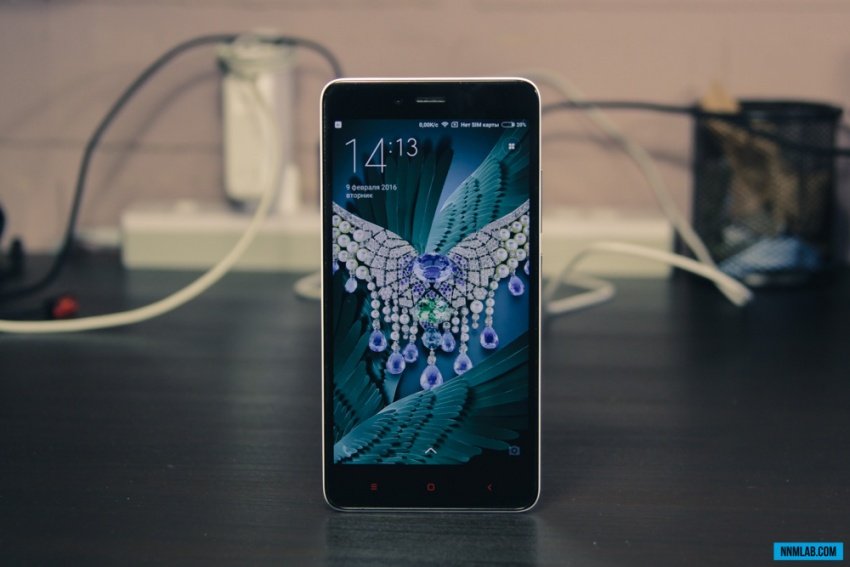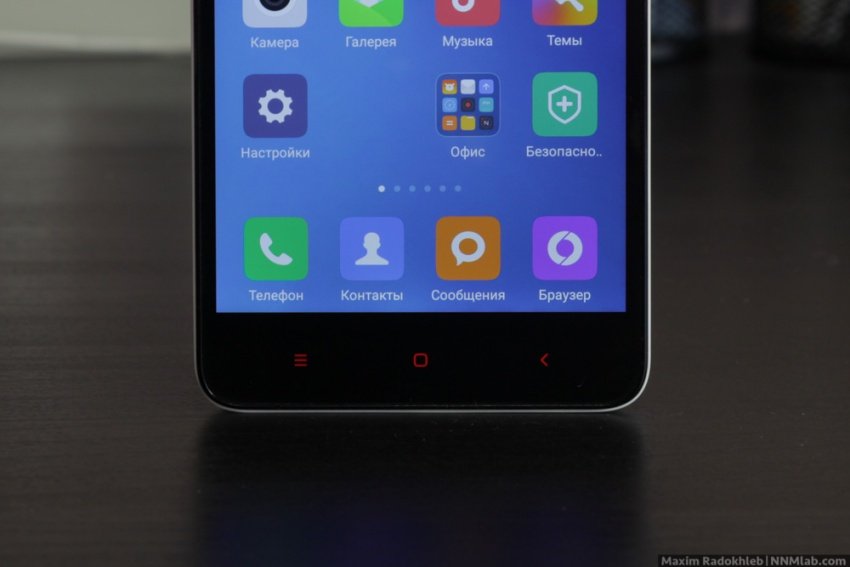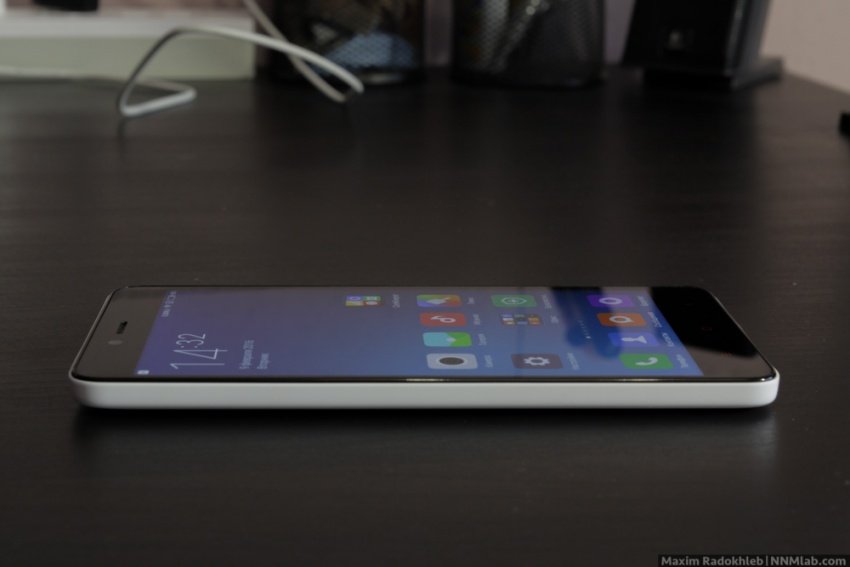
Despite the dominance of materials for Xiaomi redmi Note 2 yet I decided to share a little experience of operation of this device in comparison with the Meizu M2 Note, which is actively used in the summer of last year. A full review of the successor in the person of Redmi Note 3 will be released in the foreseeable future, but about the Meizu Metal now you can read on my website.
The text can contain and probably contains grammatical, spelling, punctuation and other errors, including semantic. I strongly ask the readers point to these mistakes and correct me via private messages.
Content
- firmware
- External вид
- Производительность
- Камера
- Итоги
- Где buy?
Technical specifications and a variety of versions
| screen: | IPS, 5.5-inch, 1920×1080, oleophobic coating |
| Materials body: | Plastic, 5 colors (white, black, yellow, blue, pink) |
| processor: | MediaTek Helio X10 (MT6795), 8 cores Cortex-A53 at 2 GHz |
| Graphics | PowerVR G6200 |
| Operating system: | MIUI v7 on based on Android 5.0 Lollipop |
| RAM: | 2 GB (LPDDR3) |
| User memory: | 16 GB (card slot for micro-SD cards up to 32 GB) |
| Camera: | 13 MP with an aperture of f / 2.2, auto focus, LED flash, viewing angle 78 degrees; front camera 5 MP (f / 2.0), recording FullHD video |
| Network types (TD-version) *: | GSM / EDGE (850/900/1800 / 1900MHz), WCDMA (850/900/1900 / 2100MHz), FDD-LTE (Band 1/3/7), tD-LTE (Band 38/39 / 40/41), two slots for a micro-SIM (radio one) |
| Wireless technologies: | Wi-Fi 802.11 b / g / n / ac (dual-band 2.4 and 5 GHz), Bluetooth 4.0, GPS (AGPS) / GLONASS / BeiDou |
| Optional: | USB-OTG, USB 2.0, IR port |
| Battery: | 3060 mAh, removable |
| Sizes: | 152 x 76 x 8.25 mm |
| Weight: | 144 grams |
| The price (real): | 799 yuan |
* actual frequency specified, are displayed in the engineering menu
at the time of writing officially sold 3 versions smartphone:.
>
- The cheapest, Foreseeable in this article, operator version (China Mobile) redmi Note 2 is focused exclusively on the Chinese market and, in theory, should not work in European 3G / LTE-networks. Also known as TD (GSM) smartphone -version. The official price – 799 yuan. On board 2 GB of RAM and 16 GB of user memory.
- Standart Edition will cost 100 yuan more expensive, although the performance difference as such, no. Officially zavyalena support FDD-LTE and the WCDMA, ie used “we” mobile standards.
- Prime version differs from Standart increased volume of operational and user memory of up to 3 and 32 GB, respectively, and the maximum CPU clock speed is increased from 2 to 2.2 GHz. Price top version – 999 yuan (150 dollars). Once again, it is the official prices for China.
In fact, it turned out that TD-version of the smartphone fully supports the local mobile standards, ie FDD-LTE (4G) and WCDMA (3G) + initially declared and already expired for the Russian operator MTS frequency TD-LTE (lane 38-41). How long it will last and whether Xiaomi generally close this “hole” (software update, for example) – it is unknown, but at the time of publication of the article the situation is such that the difference in previous versions of the smartphone is simply no
Sew before using Similarly Xiaomi Mi4c, about which I wrote more than a month ago, the smart phone came from Chinese online store preloaded with MIUI version 66.77.111.0. Shop, focusing on the CIS markets, installs its own version of the software with partial localization simultaneously adding in a bunch of firmware virus software. Actually, the software version also artificially high so that the smartphone does not “notice” the official updates from Xiaomi.  Пользоваться this firmware, I strongly do not recommend, at a minimum due to the slow down interface, and an endless stream of annoying notifications. In the case of Mi4c for the treatment of this problem was sufficient to establish the firmware from Global MIUI site through staffing application «Updater», but with the Redmi Note 2 have such a method did not work (bug «signature verification failed», about which later), so I had to resort for the installation of a custom recovery.
Пользоваться this firmware, I strongly do not recommend, at a minimum due to the slow down interface, and an endless stream of annoying notifications. In the case of Mi4c for the treatment of this problem was sufficient to establish the firmware from Global MIUI site through staffing application «Updater», but with the Redmi Note 2 have such a method did not work (bug «signature verification failed», about which later), so I had to resort for the installation of a custom recovery.
WARNING! For all the action from your phone or firmware developers, nor I personally do not bear the responsibility! All transactions you make on your own risk!
- The theme for the official firmware on 4PDA a dozen different ways to setup of a custom recovery from under a variety of platforms. On the official forum MIUI I found, it seems to me, is the easiest of them. To start “Updater” (or “Update”) you need to download the file here, and “throw” it via USB-lace in the root system.
- A standard application set it. To do this, call the context menu in the upper right corner of the application and when you click “Select firmware file” (second from top) install TWRP 2.8.7 version (select “carried over” before the file).
- Smartphone will reboot after all the manipulations. Now we download the necessary firmware (I was staying on the developer version of MIUI.su) and drag it to the root of the memory of the smartphone. A context menu “Update” application downloads in Recovery (the fourth item from the top).
- The “Wipe” menu do Factory Reset (hold the slider at the bottom).
- After this paragraph ” install »choose a prepared our archive and install it.
- In the formed after the software installation window do” Wipe Caches “.
- Reboot. Smartphone is ready to use.
At the end of 2015-beginning of Xiaomi sign their firmware private key. This means that the stock through the recovery will be sewn (not important or completely by OTA) only stock Chinese EEPROM. When you try to flash through any other error is «signature verification failed». – information from the forum 4PDA
Unlike Xiaomi Mi4c, where an official is available only to the Chinese version of MIUI (without Russian localization, but with the British), on the Redmi Note 2, you can install the appropriate version of MIUI Global. – firmware from Xiaomi with the Russian language, and Google. But the Chinese company received not the best way signed the Global and CN firmware different private keys. Accordingly, even install firmware from the official Chinese language after Russian stock rekaveri not be able to use the program and have MiFlash or go on my way with the installation of the firmware from third-party localizers.
Installing the software – is the main scourge of Xiaomi smartphones ordered directly from China, since the machines purchased locally most likely already be installed on miui.su firmware, and the like to support the air updates. I started writing this chapter as soon as the device was, but by the time of publication Xiaomi insert another stick to their same wheel, locking the bootloader on some new devices. I suppose that this “bjaka” soon gets up and surveyed the model, but by that time the company has to finished software for self-unlocking the bootloader.
Regarding MIUI will not be repeated in the review Xiaomi Mi4c I stayed on the capabilities of the operating system and talked about his attitude towards thereof.
Appearance, ergonomics, display

compared with Meizu M2 Note one of the downsides of this unit is to implement a removable lid. That is, on the one hand, yes, well, it is possible to purchase the battery at any time and change it. But when you take the smartphone in your hands – it creaks. Always creaks as if you do not have or twisted in his hands. Under the hood are located two slots for SIM-card “micro” size, a slot for microSD memory cards, and a removable battery at ~ 3000 mAh.
By the volume rocker I have no complaints, it is in combination with the power button located on the right side. Execution of the latter is poor. The key bit “littered” because of which suffered tactile response. Chicanery, of course, because the case is clearly not a mass, but in general operating experience affected.

Multimedia speaker loud and relatively “clean” at maximum volume. Although the cases where it was necessary to use the maximum speaker volume when playing multimedia I had gone a couple of years. On average, the volume and the lower level, all very good – to view the video in a relaxed atmosphere is enough.

The rim camera slightly protrudes beyond the body and takes the brunt of all flat surfaces on which you put your smartphone. Needless Case solves this problem, but so far the smartphone and not small, and a case will add weight and in size.

At the top: a connector 3.5 mm jack and infrared port. The latter wrote in the review Xiaomi Mi4c, but for me it is still a useless option. The sound quality of the headphones (Sound Magic PL30 used and Meizu HD50) subjectively worse than the Meizu Metalili M2 Note, a minimum volume of the stock less.

Xiaomi How long will displace USB-port on the left side relative to the center? The question, of course, in the air, but it’s damn inconvenient, especially for owners of docks. Ordinary USB, version 2.0.

The front panel is covered with glass, the origin of which is not known. Quality oleophobic coating is poor. Softkeys are endowed with a bottom illumination.
 At the top: the slot under the speaker, front camera, proximity sensor and a tri-color LED indicator.
At the top: the slot under the speaker, front camera, proximity sensor and a tri-color LED indicator.

I already used that cheap smartphones really good displays, and you? IPS-matrix with maximum viewing angles and FullHD resolution smartphone whose price starts at $ 125 – that’s good.
 Then let’s talk about performance, which eliminates most of the structural defects, such as creaking lid, “sticky” power key or bulging chamber rim.
Then let’s talk about performance, which eliminates most of the structural defects, such as creaking lid, “sticky” power key or bulging chamber rim.
Performance, autonomy and communication
Many odes sung MediaTek Helio X10 and I think I just agree with them. We close our eyes to the core, clock speed, and the benchmark results, because everything works quickly. MIUI in the native interface does not slow down, let go of the game and not on the maximum graphics settings, but on average stable. In World of Tanks: Blitz, which is one of the most “voracious” Today mobile games at medium settings FPS rate ranges from 25 units in the action-scenes to stable 60 static. On minimum settings the frame rate rarely drops below fifty. The rear surface of the smartphone under heavy load is not heated above 40 degrees Celsius.
The average installation:


Low:
 For the sake of completeness I cite tests AnTuTu Benchmark latest version:
For the sake of completeness I cite tests AnTuTu Benchmark latest version:
And Geekbench 3:
 2 gigabytes of RAM is enough for a comfortable life, but if you can pay extra and take the Prime version – take. After turning on the user’s needs is given about 1 GB, which is not so much with regard to the requirements of modern software and their continuous growth. User memory is available about 12 GB, and a lack thereof, is covered by the presence of a microSD slot. Officially supports cards up to 32GB, but the forum people support the use of cards up to 128GB.
2 gigabytes of RAM is enough for a comfortable life, but if you can pay extra and take the Prime version – take. After turning on the user’s needs is given about 1 GB, which is not so much with regard to the requirements of modern software and their continuous growth. User memory is available about 12 GB, and a lack thereof, is covered by the presence of a microSD slot. Officially supports cards up to 32GB, but the forum people support the use of cards up to 128GB.
In the background is already sold Xiaomi Redmi Note 3 to the operation of which I have already passed, autonomy Redmi Note 2 does not cause delight. The battery capacity of 3060 mAh lasts an average of 2.5-3 hours of screen activity, because of which will have to monitor the state of charge during the day and keep ready “paverbank”. From the included power adapter (2 Ampere) smartphone is charging from 0 to 100% of the order of 2.5 hours. In the test of autonomy Geekbench 3 smartphone is gaining 4,100 points (level Nexus 5 by LG).
 For GPS, the network reception and Wi-Fi, conversational and multimedia dynamo no claims. It works and works well. For comparison reception screenshots (/ ac to point-based Xiaomi Mi WiFi Mini Router) to Meizu Metal, Redmi Note 2 and Note 3 (left to right) on a three-meter distance and an obstacle in the form of a conventional w / w of the wall (not the carrier):
For GPS, the network reception and Wi-Fi, conversational and multimedia dynamo no claims. It works and works well. For comparison reception screenshots (/ ac to point-based Xiaomi Mi WiFi Mini Router) to Meizu Metal, Redmi Note 2 and Note 3 (left to right) on a three-meter distance and an obstacle in the form of a conventional w / w of the wall (not the carrier):
 MediaTek Helio X10 platform has turned out quite successful, especially for budget smartphones. We are waiting for Helio X20, which, according to my expectations, will set new standards of performance for a relatively low-cost devices.
MediaTek Helio X10 platform has turned out quite successful, especially for budget smartphones. We are waiting for Helio X20, which, according to my expectations, will set new standards of performance for a relatively low-cost devices.
Camera
To have repeatedly mentioned review Meizu Metal I did test shots directly on the 3 smartphones: Xiaomi Redmi Note 2, Redmi Note 3 and Meizu Metal. Archive with full-size photos can be downloaded at this link.
A few photos captured during the active operation of the smartphone:



HDR:

 Полноразмерные pictures are available at this link.
Полноразмерные pictures are available at this link.
The camera is and it takes “to their” $ 125. It is enough to come to any store and take something out of A-brands (Samsung, LG, etc.) in the same price range, take a picture and admire, simply admire the beautiful camera Xiaomi Redmi Note 2. Of course, I’m exaggerating a bit, but all also blame the camera of the smartphone will not. Ona is really enough for most everyday tasks. At night, there is a problem with a high shutter speed, which is why photos may be blurred. For speed and convenience, “camera” standard application no complaints.
Results
With an eye on the price at the time of this writing, Xiaomi Redmi Note 2 despite the structural deficiencies (creaking lid) is the best PHABLET in budget price segment (up to ~ $ 150). This, of course, my personal opinion. Yes, on sale there Meizu M2 Note and Redmi Note 3, but people will still be predominantly take Redmi Note 2, and I can identify three main causes related to this: it is better (higher, stronger, etc.) performance, uncompromising support for two SIM -Map (micro format) and memory cards and removable rear cover with a removable battery. Knowing our people – these factors are really decisive. You can even here the situation with the dollar attributed, by the way. In fact, a person does not play games, I would suggest that a closer look at Meizu M2 Note from less productive system-on-chip, but better autonomy and assembly.
Both smartphones are not deprived of software problems when ordering directly from Chinese online stores, all of them, I said in their reviews. Local shops mostly sell the smartphones with no problems and with a no warranty as described above. Here, again, you decide: to save money, but to understand yourself or pay and leave on the conscience support local resellers
.
What we liked
- The ratio quality / price
- The performance, speed
- Display
- slot for microSD memory card *
- The presence of the “advanced” (3/32 GB) version
What we did not
- «creaky” build, play back cover and other design features
- Endurance
- Issues with installing software
What I would like
* I have enough 32-gigabyte version for everyday use, but it is very often the readers in the comments emphasize this point.
Links
Redmi Note 2 at the official website (Eng.)
Discussion on 4PDA
Overview of mygadget.su
Overview of gagadget.cpm
Overview of overclockers.ru
Overview of itc.ua
Where to buy?
Originally, I was supposed to write here, that the smartphone can be purchased at TomTop online store for about $ ~ $ 130. But at the time of publication of the article Redmi Note 2 missing in their catalog. As an alternative site for the purchase of a smartphone can advise Gearbest ($ 140), Everbuying ($ 130) or proven sellers on AliExpress, which can be read on 4PDA
Waiting for comments regarding the material here in the comments or in social networks:. Facebook, VKontakte, Twitter, Instagram. On your site I duplicate their publications with all the expanse of the Internet, so you can also look into. Thank you for attention!
<-! blocksmaster plugin ->
<-! /> Blocksmaster plugin ->
No comments:
Post a Comment